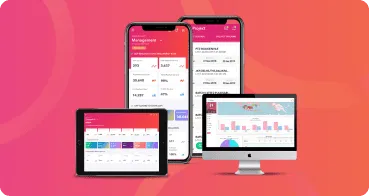In today's increasingly complex and dynamic business era, project communication management is one of the critical elements in delivering successful corporate projects. The ability to effectively and efficiently manage the flow of information among all project stakeholders is a must. Effective project communication management is one of the key factors for the success of a corporate project. Speaking of effective project management, one of the most important elements that cannot be ignored is project communication. Good communication is the foundation of successful collaboration in efficient project management. In this article, we will find out what project communication management is, its process, case studies, and the role of Tomps in supporting the success of project communication management in companies.
Definition of Project Communication Management
Based on one of the sources of articles published by dictio.id, Project Communication Management is a process that includes the collection distribution, channeling, information retrieval, and transfer of information within the project. The Communication Management process must be able to provide information to all members needed for project success. Everyone involved in the project must understand how to communicate effectively in the execution of the project. This involves the various parties in the project, including the project team, stakeholders, and external parties. This competency must be possessed by a project manager in order to guarantee that all information about the project will arrive on time, be created appropriately, collected, shared, stored, and organized appropriately.
The Project Communications Management Process
The project communication management process which includes several important stages is as follows:
1. Information Gathering: This is the initial step where the information required for the project is collected. This information can be in the form of documents, reports, data, or communications from various related parties.
2. Information Distribution: Once the information is collected, the next step is to distribute it to interested parties. This includes project team members, clients, stakeholders, or external parties involved in the project.
3. Information Channeling: This process involves sending the information to the intended recipients. Methods of channeling information can vary, ranging from emails, meetings, to web-based platforms.
4. Information Seeking: At this stage, if there is any confusion or need for further clarification, the party receiving the information can seek additional details to understand the information they are receiving.
5. Information Transfer: Relevant information should be transferred from one part of the project to another as needed. This ensures that everyone involved has the same understanding of the project.
Project Communication Management Case Study Example
From one of the journal sources published by itsb, there is a research case study in an Engineering, Procurement, Construction and Manufacturing (EPCM) based company in Jababeka Cikarang Industrial Estate. The journal examines how the role of communication is a factor in the success of a project at PT IPK. The result is that PT IPK, which is engaged in various projects, has successfully implemented effective project communication management by adopting various communication methods and media to ensure that project information is conveyed properly. One of the methods applied is using social media as a project communication tool. The use of social media in project communication management at PT IPK has provided a number of significant advantages, including ease of interaction, transparency, time flexibility, cost effectiveness, and easy access. However, the use of social media also provides new challenges, one of the obstacles that arise is the lack of real social interaction and the lack of detailed information about the progress of a project. Therefore, companies need to find the right balance between the use of technology and human interaction to ensure project communication runs effectively. One solution to maximize in this case is by utilizing today's technology such as project management applications.
Tomps' Role in Project Communication Management
Project communication management is an important aspect in managing the success of a project. In this era of technology, various companies have adopted technology solutions to improve the efficiency and effectiveness of their project communication. One of the technologies that has an important role in this is the application of a project management system by Tomps.
Tomps is a web and mobile-based management system designed for real-time planning, control, and monitoring. This system can help companies to manage their operations and activities more effectively. Tomps Project is one of the digital solutions that has an important role in project communication management. The role of Tomps Project in project communication management is to provide integrated services from the entire project management process. In addition, Tomps Project can also maximize the performance and efficiency of project management to be monitored easily by all project stakeholders.
Tomps facilitates project communication management in the following ways:
1. Monitoring Project Status & Project Progress: This application will inform the number of projects, the accumulated percentage of each project, the percentage of project implementation progress, and the project implementation period.
2. Monitoring Project Progress & Scale: Tomps will inform the percentage achievement of project implementation progress with the project value and accumulate the total project based on the project scale.
3. Monitoring Project Category & Budget: Tomps will inform the accumulated total project and total project value according to the category and segment at the company level for each project. In addition, Tomps will also inform the progress of the accumulated total budget value of active projects according to the budget plan value, budget realization value, remaining budget, and also the percentage of budget absorption.
4. Issue Monitoring: Through one of its advanced features, Tomps can display information in the form of a list of issues / obstacles that occur in each project.
5. Active Project Feature: This feature will display a list of projects that are currently underway along with information related to the project name, project value, the person in charge consisting of the project manager and account manager, as well as the status and percentage of progress of the current project implementation.
6. Project Progress Dashboard: Tomps provides dashboards that make it easy to monitor and report on project progress. This is very useful for reporting to management and stakeholders.
Conclusion
Project communication management is an essential element in successful project management. It involves the efficient collection, distribution, channeling, retrieval, and transfer of information. In this ever-evolving and changing world, good project communication management is the foundation of successful collaboration on efficient project management. By understanding the concepts, processes, and role of technology in project communication management, companies can increase their chances of project success amidst increasingly complex challenges. This article has outlined the definition of project communication management, the processes involved, case studies that illustrate the importance of good communication, and the role of Tomps in supporting project communication management. Tomps provides various features that make project monitoring, reporting, and coordination easier. With the help of project management system technology like Tomps, project communication management can become more efficient and effective, supporting greater project success.
Reference
Annisa, A. (2019). Manajemen komunikasi proyek: studi kasus perusahaan berbasis engineering, procurement, construction dan manufacturing (EPCM) kawasan industri Jababeka Cikarang. Planners Insight: Urban and Regional Planning Journal, 2(1), 026-034.
Adityayudha. (2020). Apa Yang Dimaksud Dengan Manajemen Komunikasi Proyek?. Dictio. https://www.dictio.id/t/apa-yang-dimaksud-manajemen-komunikasi-proyek/123857







